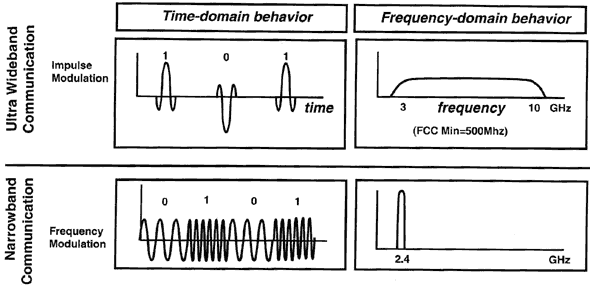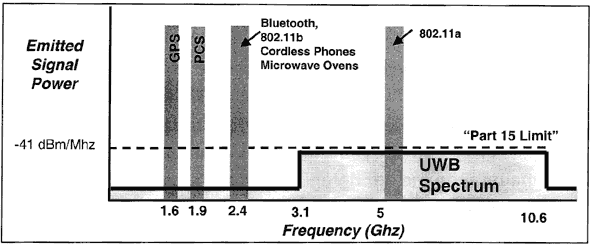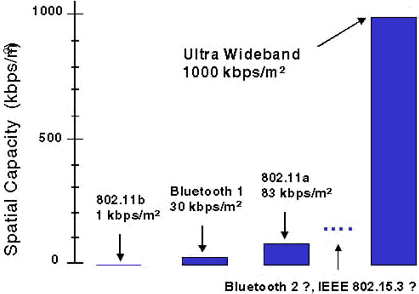The concepts of communications and calculations coexist nowadays so closely, that their indissoluble communication becomes obvious even for PR-departments of the largest IT-companies. Frequently there is no especial necessity to divide these concepts. Today, speaking about increasing capacity of computers, we speak both about growth of productivity of their processors, and about growth of throughput of their communication channels. In a broad sense we understand as communication channels internal:
- caches
- system trunks
- interfaces of memory
- interfaces of stores
and external:
- interfaces of peripheral devices
- wireless network channels
- wire network channels of structure of data transmission.
External wire liaison channels develop in two basic directions – reduction of price and increase in availability of optical channels (from top to down) and increase of throughput wire (from below upwards). However, while two basic physical carriers have not come nearer to each other (basically, by way of the price) so openly to compete – in 90% of cases it is possible not deliberating to prefer this or that technology only on the basis of character of a solved problem (Rackley, 2007).
Internal wire channels at present seriously vary, passing from specialized parallel interfaces to high-level consecutive batch (Serial ATA, 3GIO/PCI Express, Hyper Transport). That allows hoping for gradual rapproachement of external and internal communication technologies: in the future even separate components of the system block will be incorporated in a certain high-grade network. Logically it is quite justified – a modern chipset, for example, carries out a role of the network switchboard supplied by set of interfaces, such as the trunk of memory DDR or the processor trunk and AGP/PCI.
The wireless channels, from the point of view of a spectrum of applications, are nowadays only in an epoch of becoming. Today they it is effective only for a small part of communication problems, however, including and the major problem of creation of a global network infrastructure. For the local communications wireless technologies approach only partially – first of all because of low throughput. At present, the usual user with the greatest probability will deal with one of two wireless standards:
- BlueTooth – in a role of the wireless interface of low throughput for periphery and the communications between close located devices.
- 802.11a / 802.11b – a standard Ethernet-network with the general environment for creation of a network infrastructure of a general purpose.
BlueTooth and its followers will incur care of clearing of wires of your workplace, having replaced as numerous low-speed peripheral interfaces (the keyboard, the mouse, the unpretentious scanner or the printer, IrDA). And the standard 802 will play a role of “last network wire” connecting an infrastructure and final points of access. The first version of 802-nd standard has high enough throughput, more than 50 Mbit, and is aimed more likely at the sated and compact networks of the enterprises and offices.
The used base frequency (5 GHz) gets into the next premises, rather than in case of the second, 11 Mb (2.4 GHz) a variant of the standard is much worse. 802.11b, as a result more approaches for the house and various inhabited and public structures, such as the airports, cafe, cinemas, trading complexes(Rackley, 2007).
Cellular standards of communications apply for a role wide-territorial network standards of data transmission, including so difficultly getting accustomed 3G. However we shall note, that the wide circulation 802.11 is capable to spoil thoroughly a raspberry to the third generation of cellular networks since frequently their niches are crossed. Having understood with an infrastructure, let’s return to periphery and internal communications. Not only that BlueTooth possesses the carrying strip insufficient for a press and scanning, data exchange with wireless terminals, it does not suit at all for a role of the internal wireless interface. Let’s glance in the system block. There is a great lot of wires.
In an ideal it would be desirable to have:
- Sufficient for connection of stores a carrying strip, i.e. on one or two orders above this for an infrastructure.
- Ability to work both on short, and on average distances.
- All this that in the future to close this interface not only intrasystem communications, but also an infrastructural niche 802 standards and a niche of external periphery.
- Essentially lower price of realization – not only it is essential below what 802, but also below, than BlueTooth.
- Simplicity of realization – an opportunity of creation one-card the decisions which are not demanding additional winding, or even introductions of this decision in highly integrated chips of a general purpose.
At first sight, to combine all these requirements in the near future it is not obviously possible. However:
Ultra Wide Band
Actually, this term does not mean any concrete standard of wireless communications (actually, the standard is in deep development, and it is still far from the ending), and is a method of modulation and the data transmission, capable it is essential to change all wireless picture in the near future. Give without superfluous preludes we shall address to the scheme evidently showing basic principle UWB:

Above UWB, below traditional modulation, as opposed to UWB named here Narrow Band (further NB). At the left there is a kind of a signal in time, on the right – its frequency spectrum – i.e. distribution of energy on a strip of frequencies. The overwhelming majority of modern standards of data transmission is NB-standards – all of them operate within the limits of enough narrow strip of frequencies, namely, supposing small enough deviations from so-called base (or bearing) frequencies. For example, on the right below we see spectral distribution of energy of the usual transmitter 802.11b.
To it is allocated narrow enough (width of one channel of 80 MHz) a strip of a spectrum with basic frequency of 2.4 GHz. Within the limits of this small strip the transmitter radiates essential volume of the energy necessary for the subsequent confident reception within the limits of a settlement range of distances (for 802.11b – 100 meters). The range is strictly defined FCC and other adjusting state commissions and, certainly, demands licensing. Data are coded and transferred by frequency modulation (management of a deviation from base frequency) within the limits of already described channel (Rackley, 2007).
Now let’s look at UWB – here the traditional approach is put from legs on a head. In time space the transmitter radiates short impulses of the special form, picked up so that in regular intervals to smear all energy of an impulse on set wide enough site of a spectrum (approximately from 3 GHz up to 10 GHz). Data, in turn, are coded by polarity and a relative positioning of impulses.
As a result, possessing enough high total broadcasted capacity and, hence, in significant distance of the confident reception, UWB the signal in each concrete point of a spectrum (i.e. on each concrete licensed strip of frequencies) does not exceed the lowest, many times less, than at NB-signals, value. As a result, according to corresponding rule FCC, such signal becomes admissible to use in spite of the fact that it borrows, including, and sites of a spectrum already allocated for another applications:

So, the basic share of energy of a UWB-signal is necessary on a range of frequencies from 3.1 up to 10.6 GHz, and, thus the spectral density of energy does not exceed the certain 15 part of rules FCC of a limit (-41dBm/MHz). In a range of frequencies below 3.1 GHz the signal practically comes to naught, its level falls below-60. Actually, the more ideally the form of an impulse formed by the transmitter, the less energy will fall outside the limits the basic range.
But, anyway, the maximum deviation of an impulse from the ideal form is necessary for considering and strictly to limit – from here and there is this second value. The site of a spectrum below 3.1 GHz is not used, first of all to not create handicapes to GPS-systems which accuracy of work considerably falls in conditions of presence of foreign signals, even in density below-41. Therefore on a site of 3.1 GHz also have been less created an additional stock in 20 dBm (up to-60), not being strictly obligatory, but, probably, welcomed by military departments.
So, we managed to grasp an essential strip of a spectrum, not having broken existing rules. Total energy of the transmitter which we can enclose in this strip, is defined by the area of spectral characteristics (see painted over zones on the previous scheme). Even with open years it is visible, that in case of UWB it is essential above traditional NB-signals, such as 802.11b or 802.11a. Accordingly, in case of UWB we can or transfer data to greater distance, or transfer more data, especially, when on air the set of close located devices in common works. Let’s look at the diagram with settlement limiting density of transferred data on square meter:

The density of the transferred data, capable to coexist on one square meter of an ether, in case of UWB many times over exceeds popular NB-standards. I.e. we can use UWB even for intrasystem or (and why and is not present?) Communications between chips within the limits of one device! Actually, UWB solves the problem “idle time” of a spectrum – to a certain extent the same as Hyper Threading tries to solve the problem idle time of functional blocks of the processor. The strips of frequencies allocated to various services, as a rule, remain free – even in very dense city environment during each concrete moment of time the most part of a spectrum is empty, so, the air is used irrationally:
- A changeable manner of use of many frequencies. I.e. low time efficiency of use of a spectrum.
- Security strips necessary for NB-modulations (intervals between channels that they did not create handicapes each other). I.e. low frequency efficiency of use of a spectrum.
- Excessive and, as a rule, noncontrollable capacity of transfer (and consequently, and range of penetration) transferred signals, even in a situation when the real distance is not so great. I.e. Low spatial efficiency of use of a spectrum.
One more interesting feature UWB occurs from its military ancestor – radar-locations (there broadband technologies found the basic application earlier). Namely – a potential opportunity to create a network, capable to define a geometrical arrangement of participants. Sets (lattices) of aerials will be applied for this purpose, to make which in case of UWB very simply. The similar opportunity is useful to addressing objects – imagine the universal board of radiomanagement which feels, you have guided it at what device at present. One more application – creation of the dynamic diagram of an orientation of the aerial in the best way to accept the signals going from the concrete device, and to not pay attention to the others. This approach even more will increase spatial efficiency of use of an ether.
References
Rackley Steve (2007) Wireless Networking Technology: From Principles to Successful Implementation, Newnes.
Overview of Wireless Technologies. Web.
Creating a wireless world. Web.
Emerging Wireless Technologies. Web.